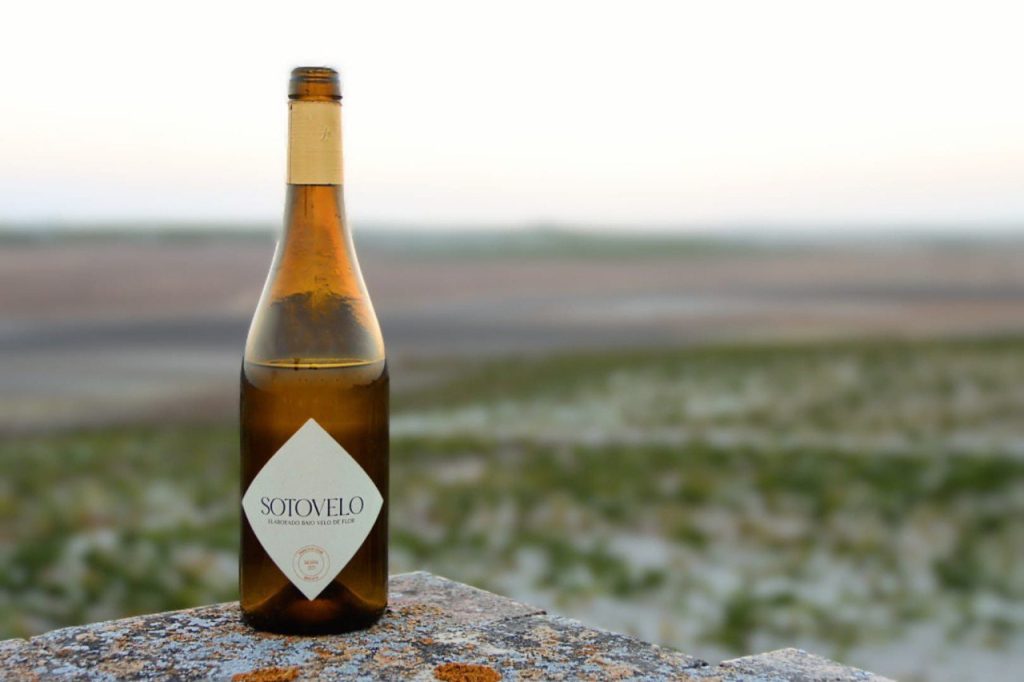When we talk about sherry wines, there is one grape that stands out above all: the Palomino grape. This white wine, so characteristic of southern Spain, is the base of some of the best wines in the world. If you’re a wine lover or just starting to delve into its fascinating world, we invite you to learn more about this unique variety. In this article, we’ll explore its origins, characteristics, and the types of wines it produces. We’ll also tell you about one of the gems made with this variety: Sotovelo wine, which originates from Pago Balbaina, a renowned terroir in Jerez.
Have you ever wondered what makes a Palomino wine so special? Let’s find out.
Origin of the Palomino Grape
Palomino is a white grape native to southern Spain, especially grown in the Jerez region, in the province of Cádiz. Its history dates back several centuries, when viticulture in the area began to develop more intensively. Although its exact origin is unknown, some historians suggest it comes from the region of Castilla-La Mancha, while others suggest its name could be linked to the region of Palomino, in Galicia.
Palomino is the fundamental grape in the production of Sherry wines (Jerez), especially known for their dry and complex flavor. This type of wine, with a winemaking tradition dating back to the Middle Ages, has been refined over the centuries thanks to its excellent adaptation to the warm climate and albariza soils of the Jerez region.
Characteristics of the Palomino Grape
Sotovelo wine is the result of the perfect combination of the Palomino grape, the unique terroir of Pago Balbaina, and a meticulous winemaking process. To better understand what makes this wine special, we divided its characteristics into three categories: bunches, berries, and strains.
Bunches
- Exceptional freshness: The Palomino grapes at Pago Balbaina grow in an ideal climate, which gives the wine unparalleled freshness and vibrant acidity.
- Citrus notes: The bunches ripen to offer a wine with pleasant fruity nuances, especially citrus, that highlight its freshness in every sip.
- Minerality: The albariza soil of Pago Balbaina provides a unique minerality that defines the personality of the bunches, transmitting the essence of the terroir to the wine.
Berries
- Perfect balance: Palomino berries have the ability to create a wine with a harmonious balance between acidity and body, providing an elegant and structured tasting experience.
- Salty touch: The proximity to the sea and the influence of the salty winds enrich the berries, giving them a delicate salty touch that highlights the wine’s coastal character.
- Barrel aging ability: Palomino berries are perfect for barrel aging, allowing the wine to acquire greater complexity and depth over time.
Strains
- Careful winemaking process: The vinification of Palomino grapes follows a carefully supervised tradition, to maximize the expression of the grape’s unique characteristics.
- Elegance and structure: Working with the strains allows Sotovelo wine to have a solid structure, with an elegance that makes it the perfect choice to accompany a variety of sophisticated dishes.
- Gastronomic versatility: Palomino grapes produce a wine that adapts to a wide variety of pairings, from fresh seafood to rice dishes and aged cheeses.
These three characteristics—bunch, berries, and strain—combine exceptionally well to create a wine that reflects the best of Pago Balbaina and the Jerez winemaking tradition. Sotovelo is, without a doubt, a wine with personality and elegance, ideal for lovers of good wine.
Types of Wine Made with Palomino Grapes
The Palomino grape is primarily used to make various types of wine, including Sherries and still wines. These are the main types of wine we can find:
- Sherry Wines: Palomino is the main variety used to make the famous Sherries. Within this category, we find wines such as Fino, Manzanilla, and Amontillado, each with its own flavor profile and aging characteristics.
- Still White Wine: Although Sherries are the best known, the Palomino grape is also used to produce still white wines. These wines are characterized by their freshness, delicacy, and excellent pairing ability with a wide variety of dishes. In this context, we find Sotovelo wine, which stands out for its aromatic complexity and its fresh, mineral profile.

Sotovelo Wine: An Exquisite Example of the Palomino Grape
One of the most representative wines using the Palomino grape is Sotovelo, a high-quality white wine produced in Pago Balbaina. This vineyard, located in the Jerez area, is famous for its albariza soils and unique microclimate, which allows Palomino vines to thrive optimally.
Sotovelo is a still wine, not fortified like traditional Sherries, which perfectly reflects the characteristics of the Palomino grape grown in this terroir. With a fresh, elegant flavor and a mineral touch, this wine is distinguished by its balance of acidity and body, making it a perfect pairing with a wide variety of dishes, from seafood to white meats.
If you want to experience the purity of the Palomino grape and the excellence of its cultivation in Pago Balbaina, you can’t miss out on trying Sotovelo. This wine is an invitation to enjoy the winemaking heritage of Jerez with a modern and refined touch.
Discover Sotovelo and bring to your table a true gem of the Jerez region.